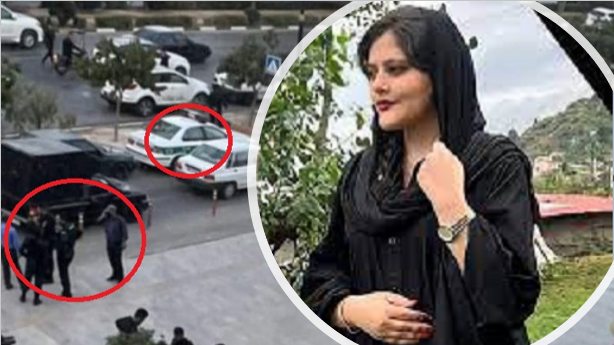
The 22-year-old’s tragic fate, a result of the regime’s increased morality patrols, sparked a fiery revolt across Iran. In the ensuing chaos, state properties were destroyed, clerics were targeted, and security forces faced stiff resistance. A year later, as the anniversary of these events looms, Iran remains a powder keg, with both the people and the regime preparing for another confrontation.
In a bid to consolidate power, the regime has been actively suppressing any perceived threat. This has manifested in mass arrests, reinstating morality patrols, dismissing educators, and meddling with the judiciary. Moreover, the significant spike in state-sanctioned executions—500 recorded till August 21, 2023—paints a grim picture.
A critical aspect of this crackdown centers on universities, with students and professors, given their influential role in the 2022 uprisings, squarely in the regime’s crosshairs. Government documents have revealed plans to induct 15,000 Basij members, regime loyalists, into academic positions, forcing independent educators into early retirements or worse. The regime, however, justifies these actions as “revolutionary duties.”
The mullahs' inhuman regime will not attain its objectives by cracking down on #students and purging academics and university faculty.
Their efforts to stifle uprisings by widespread arrests cannot shield them from enraged Iranian youth and students.
I urge unions and syndicates… pic.twitter.com/58IXtvyuO6— Maryam Rajavi (@Maryam_Rajavi) August 29, 2023
Further deepening concerns is Tehran University’s recent announcement to enroll members of Iraq’s Popular Mobilization Forces (PMF). The militia, notorious for their crimes in Iraq, is seen as an extension of the Iranian regime. Simultaneously, increased importance has been accorded to the regime’s security personnel, evidenced by special gatherings helmed by top officials.
These strategic moves also reflect the regime’s desperate bid to control public perception. Ali Asghar Daryaee, a top official in Kurdistan province, revealed plans to “refine” journalism, a drive that has reportedly extended to other regions as well. Every facet of Iranian life that can shape public opinion is now under scrutiny.
Sadly, these oppressive strategies have also targeted the most vulnerable. The southeastern province of Sistan and Baluchistan, already beleaguered, witnessed a shocking number of state-sanctioned executions, while border regions like Kurdistan saw continued attacks on struggling local communities. These aggressive measures have, however, backfired, leading to an uptick in weapon trafficking and confrontations between the public and security personnel.
Watch and judge why #Iranians are increasingly attacking state-affiliated clerics and #security forces. pic.twitter.com/KDsMnvhior
— NCRI-FAC (@iran_policy) May 2, 2023
The regime’s external approach has also been aggressive, with missile strikes targeting Iranian Kurdish factions in Iraq during the 2022 uprising. Furthermore, a recent warning issued to the Iraqi government hinted at more aggressive actions if Kurdish parties don’t disarm by September 19.
But the resistance remains undeterred. Despite the regime’s relentless propaganda against them, both domestically and internationally, the Iranian Resistance continues to inspire hope. As internal factions within the regime scramble amidst burgeoning crises, their actions betray their vulnerabilities. The regime’s miscalculations about the resilience of the resistance and the determination of the Iranian populace might well be its undoing. For the people of Iran, every day is ripe for revolution.

MEK Iran (follow us on Twitter and Facebook), Maryam Rajavi’s on her site, Twitter & Facebook, NCRI (Twitter & Facebook), and People’s Mojahedin Organization of Iran – MEK IRAN – YouTu







